























































Embarking on the open water is an exhilarating experience, flled with the promise of adventure and relaxation. Whether you’re a seasoned sailor or a weekend cruiser, safeguarding your vessel with proper insurance is not just a choice—it’s a necessity. Explore the reasons why every boat owner should prioritize boat insurance for a worry-free voyage.
The open water can be unpredictable, with unexpected storms, collisions, or other potential accidents. Boat insurance can give you fnancial protection if there is damage to your vessel, providing coverage for repairs or replacement.
Accidents on the water can result in damage to other boats, docks, or even injuries to passengers. Boat insurance offers liability coverage, which can pay for damages or injuries you’re liable for while boating, up to specifed limits, and lawsuit costs if you’re sued. This includes damage you cause to another watercraft or if someone on or near your boat is injured and you’re found to be legally responsible.
Unfortunately, boat theft and vandalism are realities that boat owners face. Boat insurance has comprehensive and collision coverage that can protect you against events outside of your control, including theft and vandalism.
Accidents on the water may lead to injuries for you or your passengers. Boat insurance offers a range of optional medical payments coverage limits, helping to cover medical expenses if you are in an accident or someone is hurt on your boat, regardless of fault.
If you fnanced the purchase of your boat, most lenders require insurance coverage to protect their investment. Having boat insurance not only fulflls these requirements but also gives you peace of mind knowing that your fnancial interests are safeguarded.


Some water municipalities and marinas may require proof of insurance for docking or accessing certain areas. Boat insurance allows you the fexibility to explore different destinations without worrying about entry restrictions.
Emergency towing and assistance
Progressive boat insurance can include optional Sign & Glide® On-Water Towing coverage. If your boat is disabled or breaks down on the water, Sign & Glide® pays for on-water towing, jump starts, soft un-groundings, and fuel delivery.
Wreckage removal
If your boat sinks, Progressive boat insurance will cover the cost of removing your boat from the water (if removal is legally required).
Investing in boat insurance is not just about protecting a valuable asset; it’s about safeguarding the memories, experiences, and joy that come with your on-water adventures. Don’t let unforeseen circumstances disrupt your journey—navigate with confdence, knowing that Progressive boat insurance has you covered. Ensure a smooth and worry-free voyage, because when it comes to your boat, peace of mind is the ultimate luxury.
Scan to get a quote in as little as 4 minutes
learn more.


























The rewards of a catch made while sight fshing go well beyond the satisfaction of landing the fsh. Take every opportunity to observe fsh in their natural habitat. To maximize success, an angler should take in as much information while on the water as possible.
By Capt. John Luck
Regardless of your target species, tackle of choice, or home waters, actually seeing the fsh is not only highly enjoyable but one of the best learning experiences an angler can have. It leads to a detailed understanding of fsh behavior.
Te sight fshing angler gets to see fsh react to everything around them, from the lure, bait, or fy presented to them, to the actual structure of the waterbody they live in. Recognizing their cues of interest or disinterest becomes applicable for species in both fresh and saltwater. Obviously remaining as quiet as possible, making sure that you have a good vantage point and during daylight hours having a good pair of sunglasses are all vital to your success. My personal favorite is the Bajio Tech Angler Collection due to their ultra clear polarized lens.
Sight fshing enables an angler to have more control over the outcome and allows you to adjust your bait and techniques to ensure a strike.
Sight fshing isn’t just about catching fsh; it’s about understanding their behavior, engaging with the process, and enjoying the thrill of spotting your target underwater. So next time you’re out on the water, keep your eyes peeled—you might just discover a whole new dimension to your angling.
I hope you fnd this article informative! If you have any other requests or questions, feel free to ask. Tight lines.
Contact Capt. John Luck at luckydogman@msn.com.




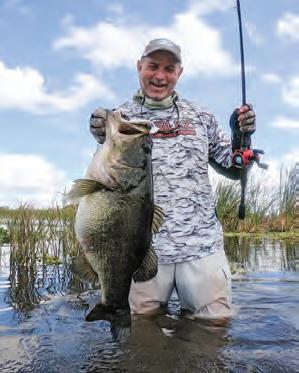







It seems the farther south you go, the tougher the fsh get. Tis holds true in the South Pacifc. If you’re looking to go head-to-head and toe-to-fn with some of the toughest fsh out there, Fiji is a great bet.
Tese fsh are aggressive, fast and strong, and with a fortress built of line-cutting sharp edges, the fsh start with the advantage. Tis is a great place to target giant trevally (GT). Although it is still far away, Fiji is a great alternative to the Seychelles, and it is a destination that ofers amenities for anglers as well as their non-fshing companions. I fshed out of Savusavu, a large remote island that requires an additional hour-long fight on a small plane from the international airport on the main Island. Te remoteness means less fshing pressure, but the island still ofers luxury accommodations. As fshy as Fiji is, it doesn’t get much fshing tourism. It’s a diving and resort destination that happens to ofer amazing fshing. Summers feature a great yellowfn tuna and GT bite, and winters hold marlin and wahoo. I was there during a transitional phase into winter (seasons are reversed there), and there were plenty of resident fsh to target including GT, which is what I was afer. Immersion Fiji is the most experienced guide on the island, and Michael can handle anything from topwater for GT to massive yellowfn and even spearfshing or a cool waterfall getaway.
Te GTs are unquestionably an apex predator and the top quarry. Tese are very aggressive, strong and smart fsh that you need to be battle ready for. My weapon consisted of heavy spinning gear with 100-lb. braid, 150-lb. leader and 350-lb. terminal tackle. When a GT explodes on a 7-inch popper, there is no question that it’s game on. It’s like a bowling ball being dropped from a third-foor window, followed by hooking your line to a semi truck. With drags set at 20 pounds, the fght is as much on the fsh as it is on you. Any less drag would result in countless breakofs in the reef. Te fght will tax your strength, and be prepared for some heartbreaks. Tere is no doubt that topwater fshing for these guys exceeds the hype.
Another fsh that will blast your popper is a Pacifc Spanish mackerel, also known to the locals as walu. Similar looking to our kingfsh, this is one of Fiji’s most prized table fare. It’s much whiter, fakier meat than our mackerel and is a staple in Fiji’s national dish Kokoda (pronounced ko-con-da), which is a ceviche with fresh coconut cream. Tey ofen blow a plug completely out of the water, and they also hit deep trolling plugs, which makes for a nice break
By Will Schmidt


from casting. Long strong runs and crazy aerial attacks make this another great fsh to come across as you search for GTs.
You can also downsize to a foating stick bait for additional topwater action. Smaller, yet aggressive and strong fsh like red bass, bluefn trevally, emperor fsh and other reef dwellers provide plenty of exciting action on the surface.
If giant trevally are on your hit list, Fiji is an amazing destination that fully delivers. Te locals could not be more inviting and friendly, the water is unbelievably clear, and the islands are as peaceful as they are beautiful. It’s truly a trip of a lifetime.
Will Schmidt is a seasoned tournament angler who has been writing about fshing for three decades. For information about fshing Fiji, contact Immersionfji.com.



You want new charts?
You got new charts! Explore the ocean with vibrant terrain & depth shading, using all-new TZ MAPS. Don’t just take our word for it. See for yourself. Scan here, and we’ll show you!
THATCH MAGUIRE, EDITOR AT LARGE
Snook are a great inshore/near shore species to target. Teir predator style bite and their world class fght make them truly worthy of the gamefsh title, but catching a snook or targeting snook can be challenging. While there are countless fsheries that hold snook, narrowing down the best area is not an easy call. Given that snook season opens on Florida’s east coast September 1st here are a few tips that will pay of in planning a successful snook fshing trip; one that nearly ensures your success.
First and foremost, where are you most likely to catch snook? Tat’s not a trick question. It’s the frst question you should answer before planning your snook fshing expedition. My snook fshing eforts have led me to believe that the Jupiter Inlet on Florida’s East Coast is the most reliable estuary for easily accessible snook for beginners. My catch ratio over the many years that I have fshed the Jupiter Fla. Inlet suggests that the primary species in and around this pristine inlet is snook. Day in day out, if you catch a fsh in the Jupiter Inlet it will more than likely be a snook.
Te next important question for a successful trip is what to use as a bait or lure? For the most predictable success I strongly recommend live bait. Te bigger the better. Pilchards are my number one live bait, but croakers and pinfsh work well too. Keeping your live bait lively

and healthy is a chapter in itself. Changing your water regularly and adding aeration are key essentials to prolonging your bait’s life. Tere’s nothing worse than getting on top of the bite and discovering your bait is dead. We’ve all done it, but don’t let it happen to you.
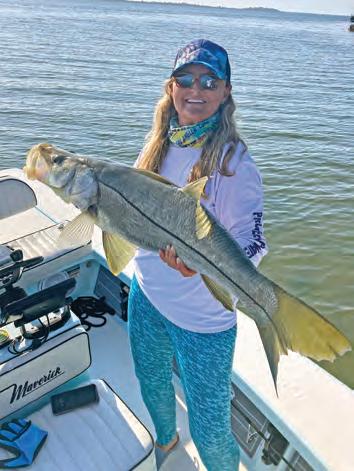
Next on the check list is tackle. You’ll want to scrap the light tackle approach for Jupiter Inlet snook. Medium to heavy or you’ll invariably lose the big ones. I recommend a 20-pound braid with at least a 40-pound leader. Circle hooks are a good consideration if you’re experienced in using them. Nothing less than a #4. You better have a heavy-duty landing net too because some of these monsters just won’t ft into some of the more modest nets. Te next important question is the easiest to answer. Where in the Jupiter Inlet do I fsh for snook with predictable results? Answer- just about anywhere! Obviously, docks are a great hiding place for snook, and night fshing will normally produce the best results around docks with lights or shadow lines. Flip a big pilchard under a dock light in Jupiter Inlet and watch what happens. You’re about to be tested because you’ve got to horse them away from the pilings or you’ll be kicking yourself for days. Tis is where the braid comes in handy. It’ll allow you to win that battle more ofen than not. But everybody loses that battle from time to time. Seawalls are also a good source for targeting snook. Tey’re cruising the seawalls constantly so just be patient and let your live bait do all the work.
You can use live shrimp if that’s all you can get, but your species catch will not be predominantly snook. You’ll catch a fair amount of junk fsh in Jupiter with live shrimp. I personally don’t want to confuse the efort with all that inferior action, and you don’t have to travel to Jupiter for that catch.











Largemouth bass in Florida will now have a new name. Tis new designation may also afect bass in Georgia, North Carolina and South Carolina as well. Tey are now designated as Florida bass. We’re sure our buddies in Georgia, North Carolina and South Carolina are going to love that, but a recent study by researchers at Yale University using genetic analysis determined that Florida bass are their own distinct species. Te scientifc name for Florida bass is Micropterus Salmiodes while the scientifc name for largemouth bass will now be Microperus Nigrians.
Anglers have long suspected that bass in Florida grow faster and bigger and now the genetic research confrms that theory. How this new designation will afect the bass tournament circuit and regulations remains to be seen.
According to Michelle Kerr,






spokesperson for the Florida Fish and Wildlife Conservation Commission, “Genetics research gave us a clearer picture of what many anglers and biologists have long suspected: Florida bass are truly unique. Recognized now as a distinct species from the largemouth bass, this new classifcation not only celebrates Florida bass as a symbol of our state’s freshwater legacy but will also orts in conservation and management.”
Given that Florida hatcheries have long been a premium source for stocking and restocking bass estuaries throughout the world, the new designation could have ramifcations beyond the Carolinas and Georgia. Regardless of what the future for bass nomenclatures holds in store, our hats go of to the astute researchers at Yale University for providing proof of what many anglers have suspected for years.
For more information on Florida bass visit myfwc.com/fshing/freshwater/black-bass/forida-bass/
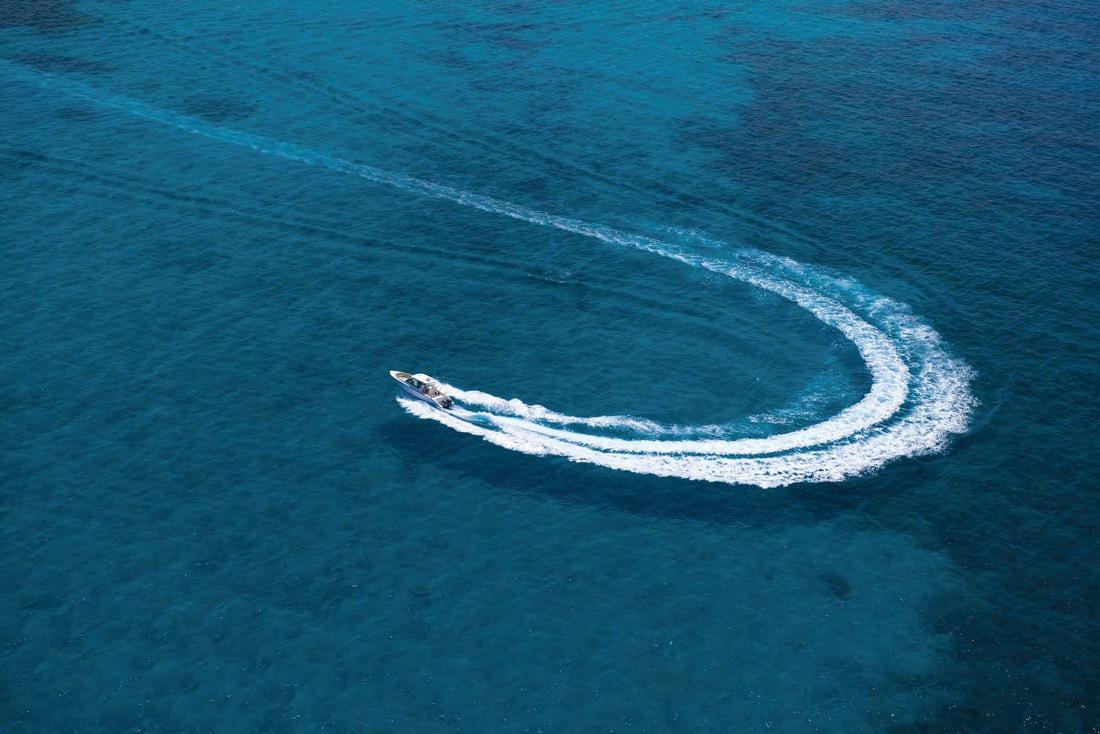




By Emily Hanzlik
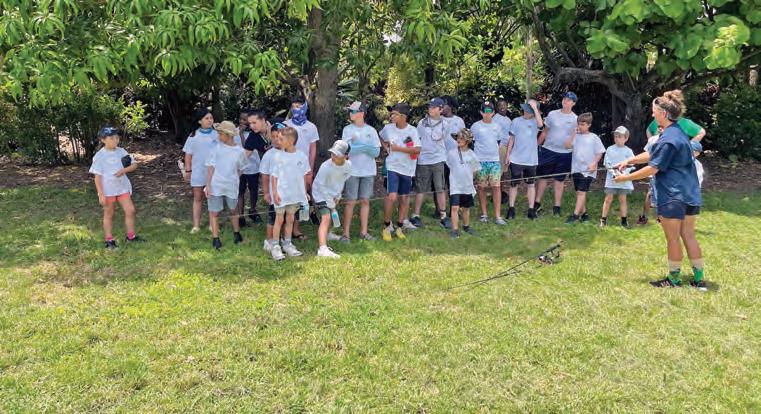
events, which is a video of my coworkers and I fshing the local waters. Within the videos are lessons about rigs or lures that best ft the area. Tese videos are the backbone of our online program, which guides new anglers through learning to fsh.
This summer, I’ve had the opportunity to work on my passion for educating young anglers. Tere is a growing need to bring youth involvement to the sport, and here are some of the ways I’ve been able to target young anglers recently.
I am lucky to work with the International Game Fish Association (IGFA). Most people know this organization for keeping track of record fsh, but they also teach families to fsh. IGFA provides Passports Kits, which are all-in-one teaching boxes with everything needed to put on a fshing clinic. Tese kits are sent all over the world, where individuals teach kids and families the basics.
Within the past few years, IGFA has partnered with the National Park Service to host fshing events. My coworkers and I travel to national parks to help them begin their teaching journey.



We show them how to use the tools in the Passport Kit and help them run an education event. We average about 50 people at these events, and usually half of them are kids. First, families attend a basics-of-fshing clinic, and then everyone fshes!
My favorite thing from these clinics is how excited the kids are about learning to cast. I stand in front of them and tell them to aim at me like they are throwing a ball. Some kids are nervous, at frst, but the fear goes away when they realize it is easy. It’s an amazing feeling knowing you helped change someone’s perspective.

In addition to working with IGFA, I also run my own charter, Emily Hanzlik Outdoors. My focus is to give kids a one-on-one experience learning to fsh. Everything is from land at a local marina where I grew up fshing. I give kids tons of hands-on experiences and teach them about the surrounding environment. I recently completed a trip with three young girls who had fshed before but didn’t know the true beauty of it. I had some mini fsh tanks set up that allowed them to view the tropical fsh they caught. Te youngest girl would catch her fsh and immediately run it over to view it in the tank. Each time she would pull out a book I had given them and try to identify the species. She would sit there for a few minutes admiring the fsh before releasing them. I can positively say all three girls learned to appreciate the beauty of the fshery we have in south Florida.
Take a kid fshing. It might be something they never forget!
Tere is also an online component to these

Emily Rose Hanzlik has caught more than 60 IGFA world records in various categories. Find her on social media @emilyhanzlikoutdoors.
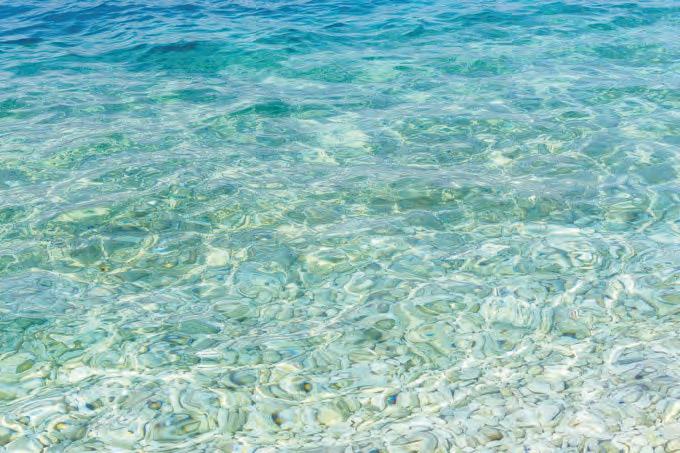









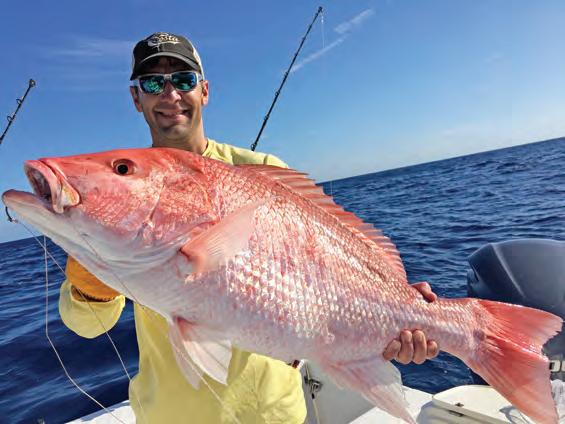
Florida Fish and Wildlife (FWC) is giving anglers the opportunity to directly provide data and improve the management of red snapper in the South Atlantic ocean.
With an exempted fshing permit, you can fsh for red snapper and keep them outside of the 1-day federal season. But here’s the catch, only a limited number of anglers can get one.
Te FWC recognizes that a 24-hour Atlantic Red Snapper season is disappointing. Tat’s why they want to recruit recreational anglers to collect better data on snapper fshery. Up to 200 people will be selected by lottery every 3 months for the opportunity.
FWC Federal Fisheries Section Leader CJ Sweetman said about 1,600 exempted fshing permits will be issued to anglers this year. Locally, 800 of those permits will be awarded to the “Hot Spot Fleet” which stretches from the Florida Georgia Line south to Cape Canaveral.
“ Te most recent federal stock assessment for Atlantic red snapper classifed as undergoing overfshing. But the stock assessment also showed that there’s near record abundance of red snapper, which is kind of what everyone sees on the water,” Sweetman said.
EFPs allow harvest for certain fsh and wildlife prohibited under current federal regulation, like red snapper
Having this permit, will allow anglers to give better data to FWC so that FWC can take that to the council and hopefully get it to open back up a longer season.
Te three EFP projects are happening simultaneously over the next 12 months from August 2024 through July 2025. Tey will be broken up into four, three-month quarters.
• Quarter 1: August 2024 to October 2024
• Quarter 2: November 2024 to January 2025
• Quarter 3: February 2025 to April 2025
• Quarter 4: May 2025 to July 2025
Each quarter’s application period will open the month before.
To apply for an EFP, log in or create an account with Go Outdoors Florida and select the project you want to collaborate with the FWC on. In Northeast Florida, you’ll want to select the “Hot Spot Fleet.”
You don’t have to own a boat to apply for an exempted fshing permit.



By Ben Martin, Editor in Chief
Passionate anglers are in all elements of our society. Te angling community is inclusive of all socioeconomic strata and political preferences. It’s non-racially biased, non-gender specifc or restrictive, and passionate anglers are found within all professions.

I recently had the opportunity to interview one of Hollywood’s up-andcoming young talents, Alex Neustaedter. You may remember him from his roles in American Rust, Colony, Ithaca, Agents of S.H.I.E.L.D. and a slew of others, but what surprised me during our interview is all he wanted to talk about was fshing.
From the memory of his frst fsh, a sun perch caught from Lake of the Ozarks, to his ofshore kingfsh in South Florida, to his current fy fshing endeavors Out West, I found myself thinking, “He’s one of us.”
Tat commonality within the sport of fshing is so rare in today’s era of divisiveness and exclusionary mentality that I feel compelled to salute us, anglers of all walks of life sharing the joys of something we can all agree on. Fishing is a great sport, and anglers make up a great community.
For more information on Alex Neustaedter and his cinematic career, visit https://www.imdb.com/name/nm2614237.






By: Capt. Dave Stephens
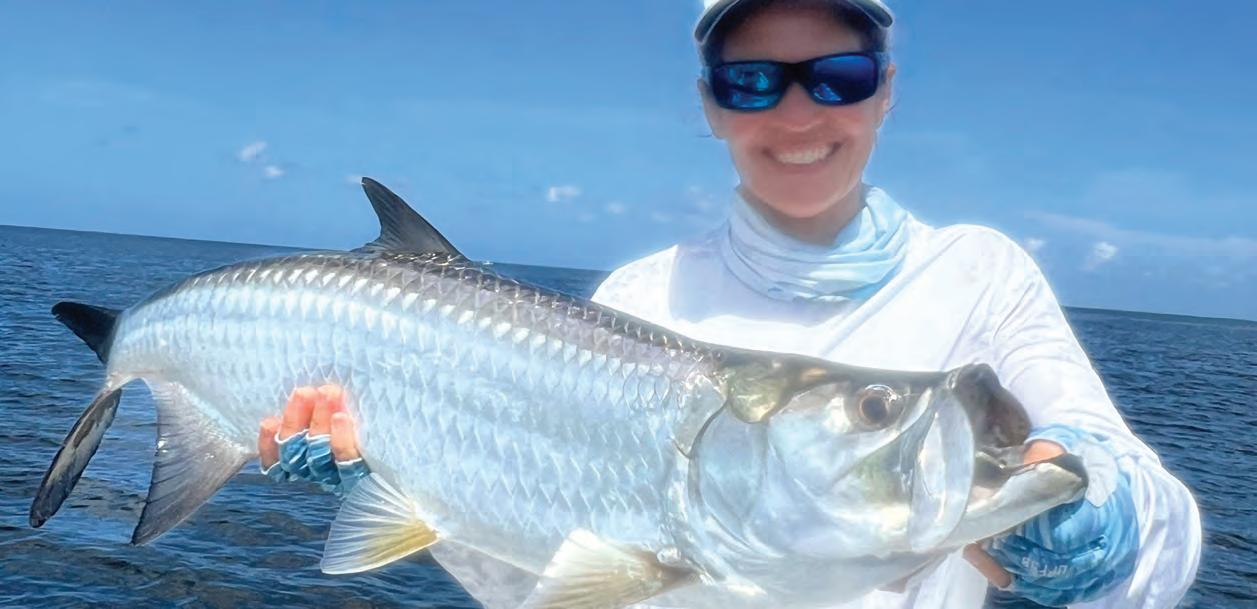
September can be a very special month on Charlotte Harbor as we are getting into the transition from summer to fall. This means a lot of activities are going on, from fish that depend on a food source to migrate or getting ready for possibly winter. Don't get me wrong, we are not in no way discussing winter yet! Large schools of lady fish are running the bars feeding on glass minnows, and in return the feeding frenzy calls in tarpon looking to fatten up to migrate. Finding a frenzy like this is like finding a gold mine and there is so much going on, you almost don't want to fish. It's actually pretty cool just sitting back watching Mother Nature do her thing! Without a doubt the number one fishery that people have been waiting for, has to be red fish. This is another fishery that relies on mullet. Reds love crustaceans, so any school of fish that swim around stirring up the bottom is going
to call in the red fish. Locating large schools of mullet on the local bars is key to finding feeding reds, and if you do find the mullet, more than likely you will find the reds. This is the time of year the harbor is full of life, mostly life that's trying to ensure that the next generation lives a prosperous life. We often think of spring as the best time to fish, however I believe the fall is probably my favorite time, and the fish that survived the summer are getting ready for winter. Just a reminder, they did not make it this far by not being aggressive! If you would like to experience some of Southwest Florida's finest fishing? Give us a call our trips are customized to fit your party's needs.

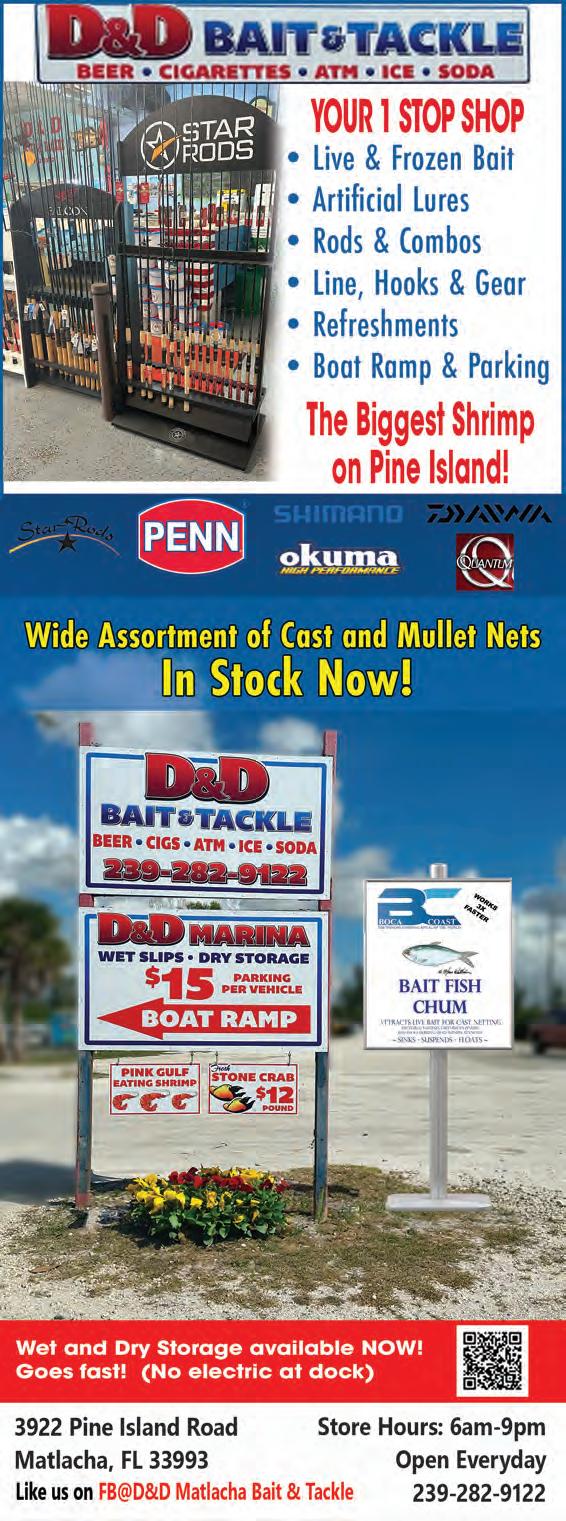
By: Capt. Bart Marx

September in Southwest Florida has been hot and this month there should be some changes. The migration of the fish from north to south should start soon. Near the end of the month there is a good chance you may find along the coast and just inshore some big schools of the red drum/red fish. They come inshore to feed up to make the long swim offshore to spawn. This usually happens late October early November. And in Southwest Florida we call October, Red October. In September, you can find them along the beaches and just inside the passes and in past years September was a month that you could catch an inshore slam with all keeper size fish. If you worked real hard you could make it a grand slam by adding a tarpon. If you find one of the schools of reds, they will eat most anything; live, green backs, pin fish etc. They will also eat fresh pieces of lady fish, and blue crabs quartered and soaked on the bottom close to the mangroves. Trout can be found on the grass flats where there is moving water as they like to lay on the edges of the sand and grass to ambush unsuspecting prey. I like to use a popping cork and a soft plastic shrimp pattern. Snook should be back in there usual living areas from the migration to spawn. I have learned that they don't go every year to spawn. There should be plenty of snapper starting at fifty feet going out to eighty feet. Mangrove snapper, lane snapper and some yellow tail snapper, and if you are a good bottom angler, the gag grouper is open in federal waters for 16 days, and if you are into shark fishing, they are everywhere! They have made a good rebound with the regulations today as there seems to have been more encounters with them this year. This is the time of year I go to Tennessee for vacation, where it is a little cooler, and do some TVA river fishing for trout and catfish. I have a 5 wt. for that and a 2500 spinning reel Battle. Give us a call if you are interested in going along with Capt. Bart on his boat or hiring him to come on your boat for a training session. I can help you learn where you can take your boat and how to use the gear you have in our area. Learning from a pro, helps shorten the learning curve coming to a new area. You can reach Capt. Bart Marx at 941-979-6517 or e-mail at captbart@alphaomegacharters.com And always remember singing drags and tight lines make me smile! <*(((((>{


By: Brycin
Have you ever wanted to get into fly fishing? Fly fishing is a sport that takes patience and finesse. It can be overwhelming to say the least. To get off on the right foot, I head over to Sanibel Fly Outfitters on Sanibel. Whitney and his expert staff have the knowledge to get you outfitted and on your way to a whole new type of fishing. Sanibel Fly Outfitters is one of the best fly outfitters in all of Southwest Florida.
Whitney got started in the tackle business back in 1990 when he opened his first store in Kittyhawk. Having passion for fly fishing at an early age. He began by catching bass and bluegill. Later Whitney had an opportunity to move to Florida. He sold the shop in Kitty Hawk and moved to Sanibel. After working in the construction business and another local tackle shop, he found a building that was gutted by fire. A tremendous amount of work went on day and night to get the place rebuilt and up and running. On December 12, 2012, Whitneys Bait and Tackle was open for business. In July of 2022 he bought another building, a former fly-fishing shop. Whitney had it opened for 2 months prior to Hurricane Ian, September 28,2022. Ian hit hard and destroyed the shop. With a lot of hard work and was back open of January of 2024.
Whitney’s favorite way to fish is the fly. He loves the fly because he has caught 300-pound bluefin tuna and sail fish on regular rod and reel, but he loves the fight of fish on the fly rod. He loves to sight fish when he gets the chance, but he will also be casting an area until he gets hooked up.
If you are not sure where to start, go see Whitney. He will get you outfitted like a pro. Need tips on what flies to use or where to go. The expert staff is always more than willing to help. They even have fly tying nights. Come try your hand at tying your own flies. Head out to Ding Darling on Sanibel or any of the beaches to start a new fun addictive way of fishing. Be sure to be aware of your surroundings, throwing a fly takes a bit more room that regular rod and reel.
Follow my adventures on Instagram @fishinwithbrycin








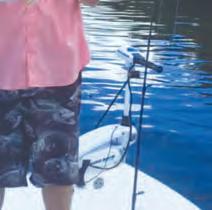
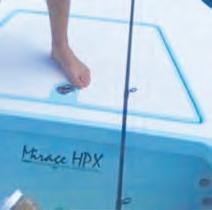


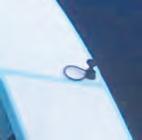
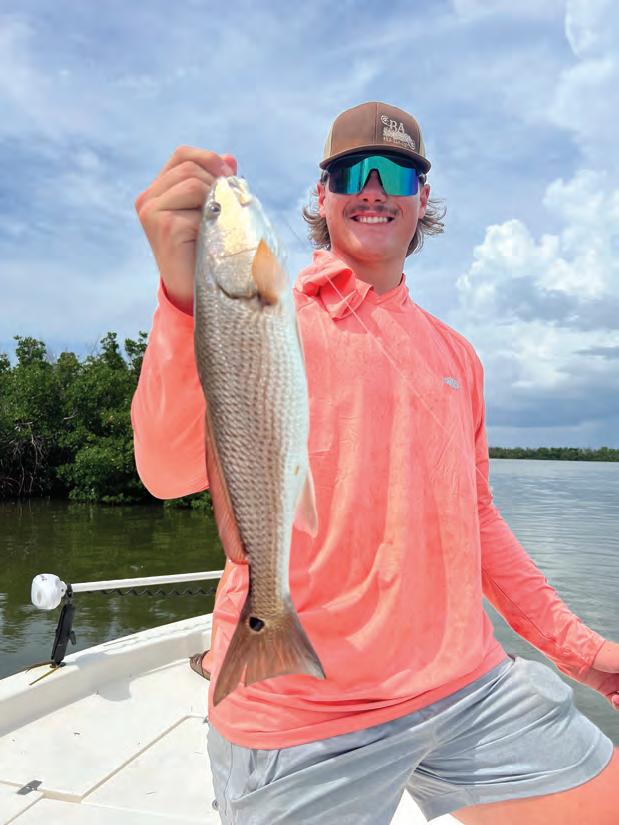

By: Capt. Terry Fisher
his year has been no different than past recent summers in regard to enjoying the waters of both Marathon in the Keys and Southwest Florida. The last few years have been fun and productive the months of June thru September. Last July, 1st Mate Vicki, 2nd Mate Moby ‘Dick’ and I spent two weeks in Marathon. Only a couple of windy days (and the need to rest) prevented the three of us, family and a few friends, from catching fish every day of the trip. Every summer I look forward to running across my fishing ‘counterpart’, Captain Jay Rodriguez, fishing guide from Cape Coral (saltynativecharters.com) while in Marathon. During the summer months, Jay also runs his boat out of Marathon. Like myself, Jay is frequently a ‘Captain for Hire’ on a client’s boat teaching them where to go and how to catch fish, making their fishing trips more fun and productive while enjoying and learning on their own vessel.
I must say, it is interesting the people and things I see and come across when staying in the ‘Keys’. I continually schedule my trips base on weather (winds) and when other clients and friends are able and likely to join in on the action. It adds a totally different and enjoyable element when fishing is a way of life or a big part of their pastime. To see other fishing guides and clients in a different element and fishing environment is very rewarding. Jay and I have been doing this with friends and clients for years now and look forward to each opportunity to leave our home base in Cape Coral and change things up a bit. However, Jay is more committed to the Keys during the summer months than I. Afterall, He was raised there and subsequently stationed with the US Coast Guard in Key West. He has a lot of contacts and knowledge to share with residents and visitors when it comes to fishing and catching. He feels obligated to be available to accommodate charter requests for clients and friends throughout the summer months. Captain Jay and I frequently share clients as well as locations, catches, techniques and experiences on both coasts. This type of relationship makes every fisherman a better one. I am looking forward to joining Captain Jay in August and September to close out the summer months in the Marathon!

I spend most of my time in Southwest Florida waters as most of my clients and friends live here. None the less, I do encourage ‘mini’ trips to the east coast to change things up from time to time and enjoy a different style of fishing, more specifically ‘trolling’ for mahi mahi, sailfish, wahoo and tuna. Even though it’s hard to beat reef fishing in the Gulf of Mexico, the deeper reef waters on the east coast are much closer and provides a lot of opportunity to ‘mix-it-up’ on a one-day charter excursions that include both trolling and ‘reef’ fishing. Every summer offers different opportunities and during my July trip to Marathon last month, I had the opportunity to ‘hookup’ with Brian Wade, the General Manager of Ft. Myers Marine to enjoy fishing from a 32ft. Contender. We ran to the Marathon Humps and all the way east of Stock Island in search of our quarry.
Even though fishing for dolphin, wahoo, sailfish and tuna is much better in the Atlantic Ocean, in my opinion, Southwest Florida offers are the best when it comes to inshore species, such as redfish, snook, seatrouts, mangrove snappers. Winds do not play such an important role when fishing inshore and these species are plentiful year-around. Snook, redfish, seatrout and mangrove snappers are biting. I look for inshore fishing to become even better this month and throughout October. Redfish harvests are open, the fish are big and with the waters cooling the bite should continue. The reefs offshore have been productive. Triggerfish, snappers and grouper have been active, and I believe September will continue to produce good results.
This is Captain Terry Fisher with Fish Face Charters, LLC. I am available as ‘Captain for Hire’ on your vessel (by the hour) for navigation, safety, fishing locations and techniques both inshore or offshore in SW Florida or the Keys. Check out my website at www. fishfacecharters.com. Call me direct at 239-357-6829 or email me at fishfacecharters@yahoo.com with any questions or to book a charter on my vessel or yours.



By: Joe Sheaffer
Dealing with the summer heat in Southwest Florida can be quite a challenge during our fishing adventures. Our hot months are much longer than areas up north. As anglers in this environment, we need to adapt to the warmer temperatures throughout this season. Many Anglers fish early, calling it a day before noon. Some fishermen fish later during the evening or even at night to beat the heat, hopefully finding fish that are a bit more aggressive. Many of us have limited opportunities to fish and go when we can. That has been my trend of late and it can be a struggle fishing during the heat. I typically use artificial lures and grinding out a few fish on my outings of late has been the norm. I don’t usually fish with live bait and trying to find fish that may react to my lure presentation is inconsistent at best. If you're like me and you fish the windows that you have, there are keys that we can focus on that can help improve our chances. Key #1, try to fish as early as you can, if the dawn of the day isn’t possible, then mid to late morning is still better than the middle of the day. Finding shady areas along the mangroves will still present opportunities to catch fish shallow before they bury themselves under the mangroves. Key #2, fishing tide changes or windier areas can definitely be productive. Fish will position themselves near current areas to feed, that can offset other conditions including heat. Focus on the down current areas especially if the flow is being disrupted by some type of structure. Key #3 Points and Funnel areas tie in with current. Fish like points and funnel areas because there will be some current around these areas and structures. Wind can be the catalyst creating current flow. Key #4 Fishing around bait pods and Mullet schools. If there is bait, usually there will be a predator or two around looking for a meal. Many times, predators will hang with Mullet schools, not so much to eat them but the Mullet spook other bait fish that Reds and Snook will feed on. Key #5 Last but not least, cover water, Power Fishing. Many times, I focus on these keys as I cover water, focusing on current areas, points, structure and even Mullet schools. Even when conditions are tough and the bite is inconsistent, I usually can find a few fish to make for a successful day on the water. Stay cool, keep casting and good luck!


3





















19
20
22
25














































5
6
3



































































By: Jessica Hendrie

Fishing tournaments have long been a cherished tradition by many locals, whether it be a 50-year classic or a second year Snapper Palooza. Combining the thrill of the catch with the competition is what we’re
all after. Not to forget that you can receive the perfect blend of sport, strategy, and overall fun. So how much do you know about fishing tournaments? At the heart of every tournament, comes a set of rules for fairness, safely and sustainability. The strict guidelines can go from anywhere between the size of the catch, species, techniques or even making rules up as you go. Some tournaments operate on a catch and release basis, but you have to be sure to take tons of photos and videos proving you were the catching angler. Doing this preserves the fish and promotes responsible fishing. Some are meat fish tournaments where you bring the fish to weigh in and harvest them to eat. In either scenario, the fish are always studied and respected. The appeal of fishing in these tournaments extends beyond the fishermen or women themselves, bringing the fishing community closer together. Families and friends gather at the water’s edge cheering on their people and sharing the same excitement of each catch. Sometimes they will even offer extra activities such as casting clinics and good food!! Sponsors play a crucial role, too, providing the prizes and extra support. For me, I love to use social media to my advantage. I am able to let people experience what it’s like in one of these tournaments just by simply posting lives throughout the day. When I have service, of course… Followers can see the action in real time and engage to possibly fish their first one! Doing so can also help bring more people in and make them more accessible to future anglers. You can never have too many photos! But despite the growing social media platforms, the main thing we should remember is that it’s important to keep the tradition of tournaments timeless and to actually remain a tradition. Sure, photos are good for memories and to show everyone what you caught but experiencing this in person is a completely different feeling! It’s something we should cherish. So overall, fishing tournaments is more than just fishing. The memories you’ll have with your team just being together and enjoying each others company or even learning new things is something you can look back on for years to come and just catch yourself smiling from the joy that it brought you. So maybe consider fishing in your next local tournament. If you do, you will surely find out that it’s not just about the fish you catch. Good luck and happy fishing!



by: Dan Carns
The Florida Kayak Bass Trail (FKBT) is excited to announce the return of their 2024/2025 season beginning in September 2024. The trial has its first event this month at Lake Toho (Lake Tohopekaliga). It’s not too late to sign up and participate in this series for the remainder of the season or build up points towards the Angler of the Year award or the championship. Often contenders for both of these awards can’t manage to enter every one of the ten events so there is plenty of opportunity to catch up on the first or second event!
With that being said it really doesn’t matter what your skill level is as I’ve witnessed the best of them have a tough outing and the least experienced have the best day of their fishing career on some of the best bass waters in all of America. This year the tournament schedule takes them to some new and exciting waters and in particular Lake Garcia and Blue Cypress, both of which are in the Fellsmere/Stick Marsh area. Both Fellsmere and Stick Marsh are world class Bass fisheries and are my favorite places to launch a kayak in pursuit of big bass.

If you are new to tournament fishing this is a great place to start especially when you consider the cost to join the club and the potential payouts. The monthly payouts are higher in this club than any other kayak fishing series that I know of and is a testament to the dedication that the organizers have toward making this one of the best clubs out there. The list of sponsors for this club has grown to include some of the best including Dakota Lithium batteries, Torrents Outdoors, Strike King, Ketch and my sponsor @Vanhunksusa just to name a few. Another advantage of fishing a tournament like this is that there is a weigh-in location after each event where everyone has a chance at free giveaways from the many sponsors. This is also a great chance to get a look at what other anglers are doing to their kayaks and what additional gear they may be using. The members of this club are very laid back and ever so helpful to the newcomers. I’ve seen members of this club share locations, baits, and best launch times for some of their favorite spots, which in the tournament world is rarity. The Florida Kayak Bass trial is also an ambassador club with the KBF (Kayak Bass Fishing) series.
I would like to offer a few words of advice if your new to tournament fishing. You will need to purchase an approved measuring devise and make sure to tether it to your kayak. You’ll also need a flag and a 360-degree light to participate in any event as launch times are early. If you’re looking for a new challenge or just a fun time, check them out on Facebook at floridakayakbasstrail!
It’s A Wild World-Get Out There!
@paddlinandfishin
Dan Carns
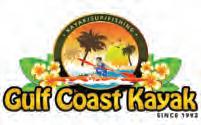




By: Mike Hammond
Shortly after Hurricane Ian made landfall in Southwest Florida, some of my coworkers and I were sent to Fort Myers Beach to assist with recovery efforts. I anxiously looked out the window to see how the Getaway Marina had fared in the storm. Lee County Parks & Recreation partnered with Kayak Excursions and the marina to host a cleanup 11 days before Ian’s landfall. I didn’t recognize the marina as we passed by on the bus. The buildings and boats were gone. On our return to the mainland, I looked again, and this time I saw someone tying down brightly colored kayaks on a trailer. It was the owner of Kayak Excursions, Stefan Keunzel, securing his scattered fleet.
It’s hard to believe this was almost two years ago. Since then, Getaway and Excursions Marina have rebuilt the docks, opened for business and hosted several marine debris cleanups. During the first few cleanups in Pelican Bay, there was no problem finding debris and filling the dumpster. As the efforts continued, volunteers had to work harder to uncover trash. Pelican Bay is again a beautiful spot for a relaxing paddle, fishing and watching the sunset.
Keep Lee County Beautiful Inc. is organizing many International Coastal Cleanup events throughout Lee County on Sept. 21. Kayak Excursions and Marina, the Getaway Marina and Calusa Blueway are partnering to be a cleanup location at Pelican Bay. I have consistently said helping with these cleanups is one of the best ways to meet other paddlers. Anyone interested in giving a hand should check Keep Lee County Beautiful’s web-

site and social media for registration. We’d love to have you paddle with us.
Parking and launching fees are waived for the International Coastal Cleanup. Normally there is a $10 parking fee to park at the Getaway Marina. Visitors who are renting kayaks from Kayak Excursions can park for free at the Excursions Marina which borders the Getaway Marina. If you have your own kayak or SUP, park at Getaway Marina and use the launch. You will have to pay the $10 parking fee and $5 launch fee. The floating paddle craft launch is well-designed and easy to use.
From Pelican Bay, it is a short paddle to the eastern end of Bunche Beach. Paddlers can also navigate under the Hurricane Pass bridge into Hurricane Bay and follow the Calusa Blueway south into Hell Peckney Bay. It is easy to get disoriented in Hell Peckney. A good navigational app is very helpful to have while in that area. There are plenty of fish and protection from the wind within Pelican Bay, if you would like an easy trip. For the non-anglers, there are often dolphins at the mouth of the bay when the tide is right, eagles, ospreys, and pelicans can be seen in the trees or soaring overhead, and there are really pretty sunrises and sunsets. It’s a great place to paddle, relax and enjoy Southwest Florida.
For those seeking more adventure, Kayak Excursions at Pelican Bay is participating in the Calusa Blueway Challenge. Go to: https://www.visitfortmyers.com/CalusaBluewayChallenge for more information and to start earning points today!




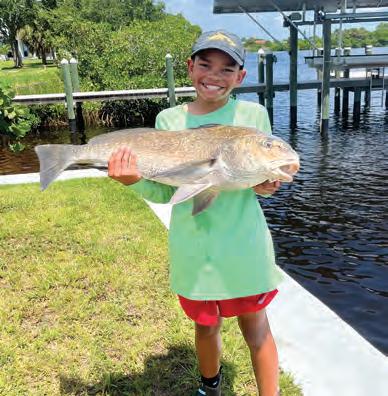









By Wayne Johnson

past it before putting lines in the water.
Before I leave the boat ramp, I like to walk the dock, checking the direction of the tide and taking a good look for gamefsh or baitfsh. Either one indicates there is likely good fshing nearby and what hatch I may need to match.
How ofen do you load up your gear, tow your boat to the ramp, launch it and then go 100 yards or less, drop anchor and fsh?
Probably never.
I’m beginning to think nobody ever does. If you’re like me, you’re anxious to hit the throttle and head of to some distant location. You didn’t put all that horsepower on the back of your boat to idle 100 yards, but maybe you should.
I have frequently seen nice snook at the dock while launching my boat and then fail to see another fsh that good all day. It got me thinking that there has to be areas so close that boaters pass right by them, yet they are not accessible to shore anglers. Tese areas are also just up or down current from the docks where people clean fsh.
What if I just move a short distance from the boat ramp or across the canal? Tere must be some forgotten fsh that anglers blow right past every day. I started doing just that, and it usually turns out very well. What looks like heavily used areas are
not necessarily areas with heavy fshing pressure, and ofen they turn out to be quite productive. If they aren’t productive, it doesn’t matter. I didn’t burn much time or gas to try them.
Here on the west coast of Florida, south of Fort Myers, Lover’s Key is a great example of forgotten fsh. Afer launching, pretty much every boat heads straight for Estero Bay, to the passes or out into the Gulf of Mexico. Meanwhile, just a few yards in the other direction, I’ve seen redfsh, trout and snapper, and I put a friend on his personal-best snook. Tis spot is so close to the boat launch that even kayakers push
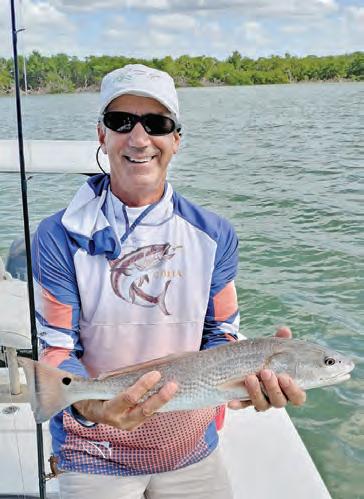
On a recent trip, I picked up a friend at his own dock, just of the Imperial River. We spotted a few fsh right there, and the fshing was so good that we never lef his canal the whole day. We caught four species within a quarter mile of his dock.
Typically, late in the day, when I’m headed back with a few lefover shrimp, I’ll stop just outside the pass and swap the smallest shrimp for ladyfsh. Or I’ll stop and throw a few more casts at some promising shoreline. It’s surprising how ofen I get a few good bites and a little excitement to end the day.
So, before heading out to your dream spot, or on the way back, try the nearby spots. You might just catch fsh everyone else forgot to fsh for.
Got a great fshing story?
Write it up and send with a few photos to editorial@coastalanglermagazine.com. We might just share it with the world.

As the sun rises, the anticipation of a day on the water flls the air. Rods, tackle, and bait are loaded onto the boat, and the thrill of catching fsh beckons. But where should we go? Before we rush of, let’s explore our options.
If we’re going to be fshing close to the shoreline a few quick considerations will make for a more productive trip. Fish tend to congregate near structures that ofer both food and protection. Docks, wrecks, rip rap, pilings, and artifcial reefs create ideal habitats. However, these popular spots ofen sufer from overfshing, becoming less productive over time.
When the usual spots disappoint, consider rocky expanses known as “hard bottoms.” Tese rugged underwater landscapes provide excellent fshing opportunities. Even spear gun-toting divers appreciate their allure.
Beyond the basics, geographical opportunities present themselves throughout the Gulf of Mexico where vast and diverse bottoms ofers more than meets the eye. Natural formations, shaped by tectonic movements or volcanic activity, play a crucial role. Concentrations of fshable populations can be sparse, akin to desert patches in the
ocean. But structure in these areas remains key.

Te Desoto Canyon and “ Te Nipple” in the Gulf’s Desoto Canyon were formed by tectonic slip faults that plunge to uncommon depths. “ Te Nipple” is an intriguing part of this underwater landscape


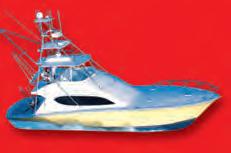


near Destin, Fla. and remains a hotspot. Some speculate that its deep waters may also contribute to the area’s shark activity. Shipwrecks are silent havens. Shipwrecks, scattered across varying depths, serve as thriving habitats. Te skeletal remains of old vessels attract big game fsh like amberjacks and Goliath groupers. Tese submerged relics hold secrets and promise exciting encounters. Monoliths are underwater treasures. Tese underwater hills are jagged, solitary, and teeming with life. Monolithic structures encourage nutrient-rich currents to rise from the depths, attracting baitfsh. Predators patrol these underwater oases, seeking smaller prey. Don’t overlook them. Your sonar may reveal hidden fshing gems. Te Middle Grounds are a prime example: Located 100 miles NNW, the Middle Grounds exemplify monolithic fshing grounds. Here, the ocean’s secrets unfold, and every sounder blip could lead to a memorable catch.
In the vast expanse of saltwater, understanding these geological nuances can transform a fshing trip into an unforgettable adventure. So, load up your gear, set sail, and explore the mysteries beyond the shoreline!
Capt. Russ Walker is a USCG Masters licensed fshing guide and owner of Tide Walker Charters out of Cape Coral, FL. www.tidewalkercharters.com (239) 994-7818














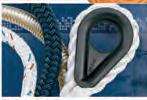




















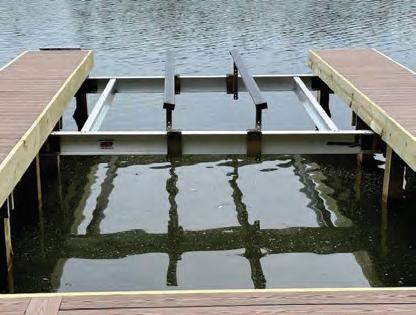




ShoreStation hydraulic boat lifts are a reliable choice for coastal residents and boating enthusiasts alike. Their strong construction, made with corrosion-resistant materials, allows them to withstand harsh environmental conditions, including sun, storms, and saltwater damage. ShoreStation provides a steadfast solution for protecting waterfront investments, ofering peace of mind to owners in the Sunshine State.
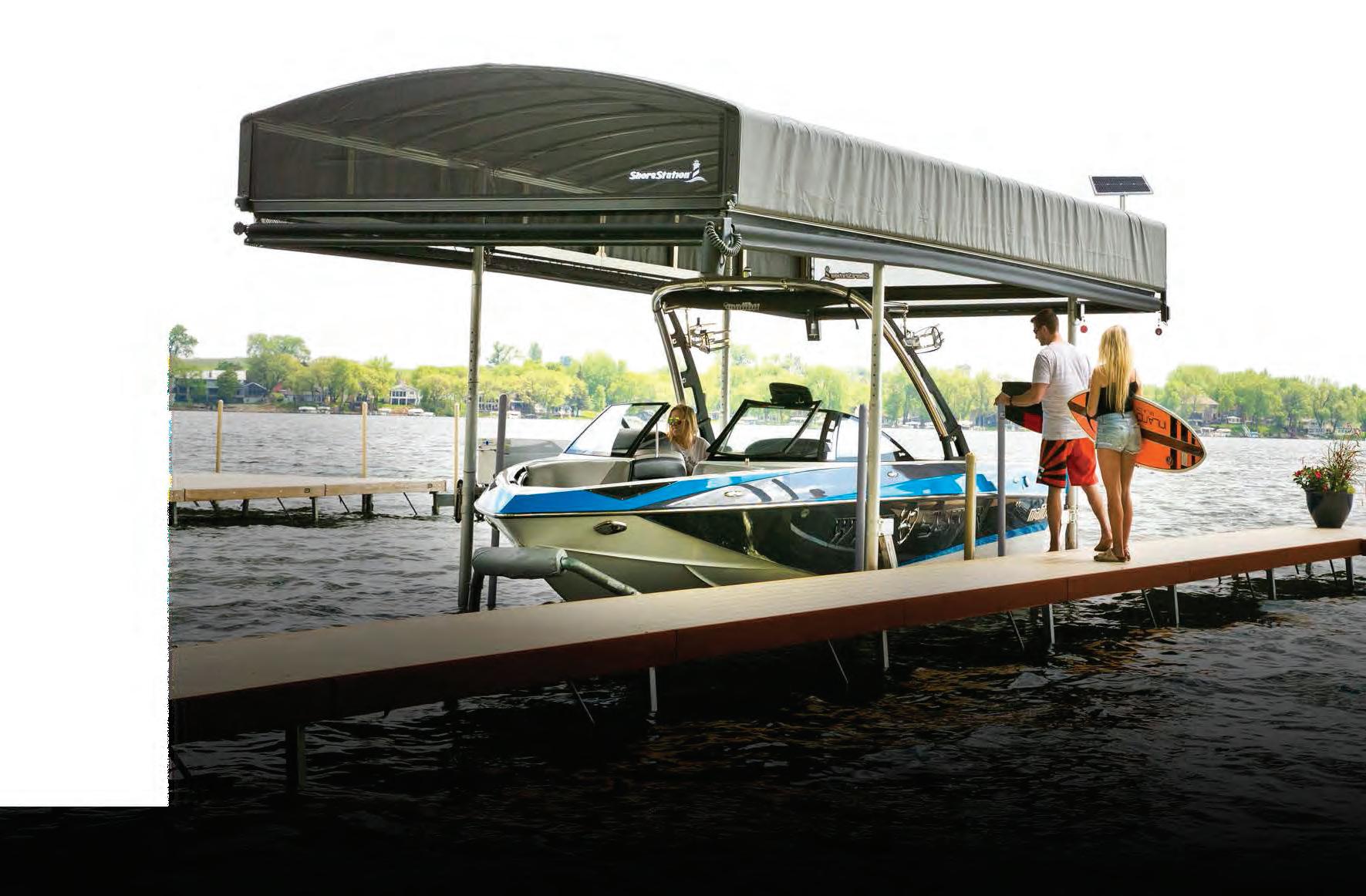







Equipped with exceptional weather resistant fabric and breathable SunTex 80 woven mesh ends for maximum protection and durability, the REVOLUTION™ Series Canopy is the most innovative canopy

Made from the highest quality materials, our innovative hydraulic boat lift is one of the fastest and safest lifts on the market today. When you have a hydraulic lift, there’s no need to worry about wind and waves getting in your way. This lift will give you confdence to safely land and secure your boat in less-than-ideal conditions.
Never miss another moment on the water. Power your lift with clean, free solar power. Our speedy 20 watt charger features solar regulator drainage protection, saving your battery from permanent damage caused by overcharging.



By Phillip Wolf


As a life-long fsherman, I have tried and worn just about every type of boating shoe in the market. From fip-fops to sneakers and most of all, the big-name brands of deck shoes. Recently I attended ICAST in Orlando, the fshing industry’s annual convention where all things for fshing are on display for all attendees to view, and I found a company who claimed to have the best deck shoes ever made. I was surprised when the owner, Ted Alfen asked me to sit down and try a pair on. Wow, I am glad I did. Afer a brief walk around his booth and near the isle way, I decided to purchase them and give them a try.

Tese deck shoes are by far the most comfortable and lightest boat shoes I have ever worn. Te tremendous support of the removable inner sole is unlike most others in today’s market. Tey are also available in wide widths for those big fat feet like mine. Tey have fast drying, breathable mesh material and non-marking white soles with special slip resistant tread. Te materials used to create these are anti-microbial and made to be odor resistant, mostly due to their quick drying design. Tey have many styles, colors and designs to meet most anglers’ needs, so do yourself a favor and try a pair. Te Del Marina deck shoe from Skuze Shoes is top shelf! Visit Skuze Shoes in Pompano Beach, Fla. or check out their website at www.SkuzeShoes.com or email them at info@SkuzeShoes.com and tell them you read about their great shoes in Coastal Angler Magazine. Use promo code Angler 20 and get a 20% discount.






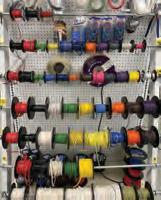






















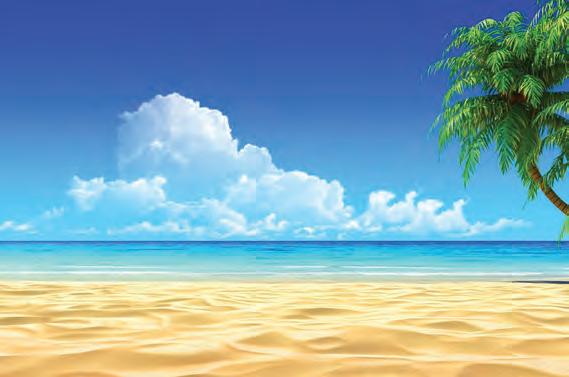



The fght to protect Florida’s waters rests on the shoulders of the guides, anglers and business owners willing to join the frontlines and use their voice for change.
For the last six years, Captains For Clean Water has partnered with their fellow water warriors at Costa to acknowledge outstanding individuals that serve as stewards for clean water and make an impact in their community.
Tis year’s winner, Capt. Ozzie Lessinger, is a guide, conservationist, and true steward of our environment.
From educating his clients, to hosting fundraisers, to standing up for our waters in Tallahassee, Ozzie always goes above and beyond to spread awareness and make an impact in the fght.
“I can tell you that in my mind, I never feel like I do enough. As a guide and a steward of our water and our water quality issues, it’s so important— whether you’re one of the corporate partners, whether you’re a fsherman, or whether you’re a guide—to please just educate about Captains,” says Lessinger. “Stay informed, and let people know what it’s all about. It really just takes a few minutes to wear the hat and let people know.”
Tank you to Ozzie for all his eforts in spreading awareness of the mission to improve our fshing environments, and for continuing to stand at the frontlines in this fght for clean water!
And a big thank you to the other nominees for their inspiring impact in the efort to restore and protect Florida’s waters! Capt. Lessinger was nominated alongside fellow captains Cody Rubner of Stuart, Fla. and Brandon Cyr of Islamorada, Fla. Tey are both outstanding individuals that also serve as true stewards of clean water and make an undeniable impact in the fght to restore a national treasure.
For more information on how you can help support the ongoing eforts of Captains For Clean Water visit captainsforcleanwater.org.
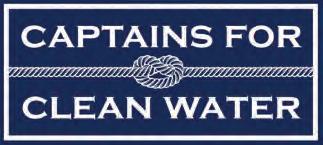




































The most popular soft drink on the planet just made a refreshing splash with these gleaming bars and rounds struck in highly pure 99.9% fine silver, each with an exquisite reverse proof finish! Each one-ounce fine silver bar features an engraving of the famous curved bottle and the popular slogan from the 1970s, “I’D LIKE TO BUY THE WORLD A COKE®”, in big, bold lettering down the side. Each silver round struck in one ounce of fine silver features three Coca-Cola bottles. These tasty treats are officially licensed by Coca-Cola® so you know “It’s the Real Thing!”
Order More and SAVE!
Purchase $99 or more, you’ll receive FREE SHIPPING to your doorstep. When you purchase 10 or more bars or rounds, you’ll also receive a FREE six-gram silver Coca-Cola Bottle Cap Coin, colorized with a reverse proof finish—a $29.95 value!













THE ORIGINAL SCENTED LURE





By Tracy Patterson

Maguire’s frst work is a compelling, fast read. His style is like a mix of Hemingway with a sardonic blend of Hunter S. Thompson. I couldn’t put it down...
Ben Martin Editor in Chief Coastal Angler Magazine “ ”

Confessions of a Fishaholic, by Thatch Maguire, is a hilarious and irreverent look at one man’s quest to catch fish in spite of life’s annoying interferences. You’ll travel with this awkward adventurer as he risks home and health to pursue his passion for fishing...regardless of the consequences. Anglers of all expertise levels will immediately identify with why his addiction is incurable. This book defines the blurred line between passion and obsession.

Tournament angler Lee Ann Powell recently set a new IGFA world record with a 10 lb. 3 oz. bass caught on 10 lb. test. She was fshing (for fun) with her friend and charter captain Dalton Smith on O.H. Ivie Lake in Texas when they noticed a school of fsh on their livescope. Powell was using a Damiki jig with a 3 inch Fluke dipped in Spike It Chartreuse Cajun Dip N Glo. According Powell, “Once the big bass took the lure the exhausting fght to bring the monster bass to within netting distance required me to constantly adjust and reset the drag with my record catch going deep each time it neared the boat.”
Afer fnally netting it, Powell says they put the fsh in the live well and headed out to fnd a set of certifed scales to weigh it. Te requirements for registering a potential world’s record fsh are stringent and Powell says she almost missed her window/timeline for submitting her catch for authentication by the IGFA.
About the IGFA: Te International Gamefsh Association is a non-pro organization committed to the conservation of gamefsh and the promotion of ethical angling practices through science, education, record keeping and recognition of outstanding accomplishments in the feld of angling.
We salute the IGFA’s decision in January 2014 to create a separate category for female anglers, opening up thousands of categories for new World’s Record opportunities.







When it comes to spooling up your reels, the options are endless. For some this can be a bit overwhelming. Hopefully in this article I can help you understand what diferent kinds of lines are used for and what line strength is the best choice for you.
Te three main types of lines are monoflament, fuorocarbon and braided lines. Each has its pros and cons in diferent situations. Monoflament line foats, fuorocarbon sinks and most braided lines also foat.
I rarely use monoflament for bass fshing, but it does have its perks for a scenario or two. When throwing big heavy glide baits, I ofen spool my reels with a very strong 25- to 30-lb. monoflament, as it is very strong and much less prone to breaking on the cast when I am casting a large bait. I also ofen use mono for is a short leader when throwing a topwater bait with treble hooks. I attach about a foot of mono leader to the end of my braid, and it is less visible while also foating to keep a topwater working naturally.
Something to note about monoflament is it’s very stretchy, making it hard to drive the hook of many diferent lures into the mouth of a fsh, especially if you’re using straight mono and have a lot of line out. Te more mono you have out equals more stretch.
I use a lot of fuorocarbon in my arsenal
TYLER WOOLCOTT

of bass-fshing set ups. Tis line has virtually no stretch, it is more abrasion resistant than most other lines, and it is also a clearer line than anything else, making it harder for fsh to see. Unless I am fshing around extremely heavy cover, where braided line is needed to pull the fsh out, pretty much every reel



I use has fuorocarbon on it. I use anywhere from 10- to 20-lb. fuoro, depending on water clarity, types of cover, and the type of lure I am fshing. Braid also serves me well in many diferent applications. Having virtually no stretch, being very strong and extremely thin compared to other lines of the same strength, and outcasting every other line made are just a few perks of braid. Te downside of braid is it’s basically tiny thin rope, meaning if you are around clear water fsh can probably see it attached to your lure. In some cases, you will need a leader attached to the end of your braid.
Every single spinning reel I own is spooled with braid, which helps them cast better and operate much smoother than if they were spooled with the other kinds of lines. Typically, I’ll use 10lb. braid and attach a few feet of a fuorocarbon leader in a size of my choice to the end to keep it stealthy. I have 30- to 50-lb. braid on all my topwater treble hook baitcaster rods to make extremely long casts. When fshing around heavy grass and vegetation, I also use braid, typically in 50- to 65-lb. test. Tis strong line allows you to get the fsh out of the mess and into the boat. With your lure being in the grass, you can get away with using a thick braid, as the fsh won’t see your line around the vegetation.
Hopefully this helps you understand the diferent lines better and helps you put a few more fsh in the boat.
Tyler Woolcott is a professional tournament angler and guide. Check out his website at www.tylerwoolcottfshing.com.

September’s fshery in the Florida Keys can be unpredictable as we transition into autumn at the end of the month. Cooler northern waters will begin to push fsh back into their southern migration, while we maintain our usual summer species.
It’s always a sweeter deal running ofshore when the mahi are still around, giving more opportunities to diversify the fsh box. Tey will begin to phase out throughout the next several weeks, making this month the last month of the year to reliably target them.
Swordfsh and blackfn tuna are also excellent fuel-burn justifcations this month. With fewer boats on the water, the trafc at the Marathon humps will be less chaotic for targeting tuna.
Te reef fshing is always a good option. Te snappers are snapping year-round and seasonal harvest for black and red grouper are still open.
Tis is a great opportunity to dive for lobster as well, as the water will still be warm, but the excitement over opening season has died down. Te beginning of lobster season can turn our waters into an absolute zoo. It’s unnerving to even



By Capt. Quinlyn Haddon
suggest going out during that time and throwing yourself in the mix of that mayhem. Tat hype seems to gravitate mostly towards the mini season in July and the few weeks in August.
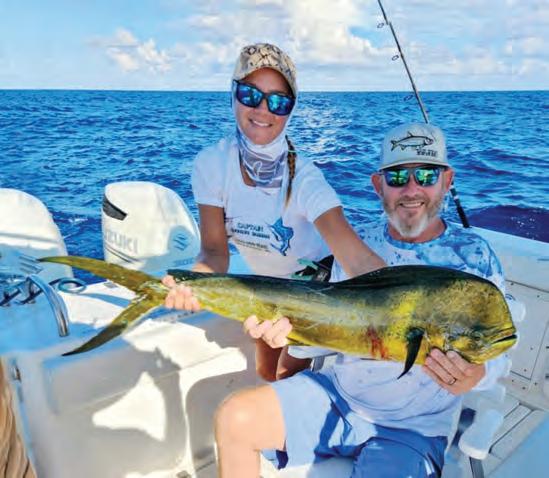
Each year when the kids are back in school, the Florida Keys takes a massive hit on tourism. We will experience the slowest time of the year over the next few months.
Although this may be a difcult time for working locals, it’s something to be enjoyed by our visitors. Te prices of accommodations will be as low as they get, restaurants will have ample seating, service will be quick, and best of all, no trafc!
Te furry of summer boaters trailering their rigs down from all over the country will have stopped, making both road and water trafc much more pleasant. Te fshery will experience less pressure, creating a mecca of hungry fsh, for those who are able to get out there.
Being in the middle of hurricane season likely
However, it’s a great time to make an impromptu trip, knowing you won’t have a problem fnding cheaper accommodations and availability for fshing charters.
Hurricane season may seem daunting, but there is more than enough notice ahead of any major storm. Locals are always diligently watching the weather for the frst sign of any potential disturbance and will be able to help you make decisions when booking last minute trips.
While September maybe be our slow season for tourism, that does not apply to our fshery. Come take advantage of having paradise all to yourself.
Capt. Quinlyn Haddon guides with Sweet E’Nuf Charters based out of Marathon, Florida Keys. www.captainquinlyn.com; IG: @captainquinlyn






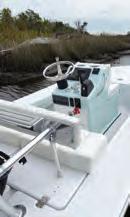







Amemorable
beach moment: You’re basking in the warm sun, toes in the sand, letting the gentle turn of the foam-capped waves lull you into a state of complete relaxation. As your eyes scan the endless horizon of blue on blue, you’re rewarded with a school of dolphins making their way across the sea.
There’s no denying their signature shape as they leap from the water. If you don’t see anything else extraordinary the rest of day, you can take solace knowing you’ve witnessed one of nature’s most playful and human-like creatures in their natural habitat.

Why not re-create that special moment with our Balinese Dolphin Pendant? We’ve captured two dolphins mid-jump in sterling silver crafted in the Balinese style. Tucked between these beloved sea mammals is a full carat of shimmering blue topaz. Made by some of Indonesia’s finest artisans, this pendant is an absolute steal at JUST $29! That’s what we call our Stauer IMPOSSIBLE PRICE!
Nothing captures the shimmering color of the ocean in the midday sun like blue topaz. With its sparkling, clear blue color and high reflective index, blue topaz is one of the world’s top-selling gemstones. The Gemological Institute of America lauds topaz for its hardness, noting that blue topaz is known for its intense color that’s better than aquamarine. With this special price, you can score quite the catch.


Satisfaction guaranteed or your money back. Enjoy the Balinese Dolphin Pendant for 30 days. If it doesn’t pass the test swimmingly, send it back for a full refund of the item price.
Limited reserves. This pendant is already one of our best sellers this year. A full carat of genuine blue topaz set in .925 sterling silver for this price is as rare as a dolphin sighting. We cannot guarantee availability for long. Call today! This offer is limited to the first 1,900 responders to this ad!
Jewelry Specifications:
• Made in Indonesia
• Blue topaz and .925 sterling silver
Balinese Dolphin Pendant (1 carat)




$299 $29* Save $270
*Special price only for customers using the offer code.


Chain sold separately.
One carat of shimmering blue topaz set in sterling silver for ONLY $29

What Stauer Clients Are Saying About Our Topaz
“Just lovely! Would recommend it as a purchase. Thank you STAUER.” — Mary L.




An angler trolling for striped bass hauled in a 127-pound, 6-ounce Arkansas state record paddlefsh on June 15. Te monster fsh came from Beaver Lake in northwest Arkansas, and it crushed the existing record of 118 pounds.
Mike Schleeper inked his name in the record books while trolling brooder minnows, which are large shiners, about 30 feet deep near a point on the 28,000-acre lake. His friend and fshing buddy Tom Mayberry was there to help during the 45-minute fght.
“I’ve been fshing for stripers up here for about 13 years, and I’ve had the chance to catch some stripers over 30 pounds, but this was diferent,” Schleeper said. “It didn’t strip line and stop in surges like big stripers do, he just sort of pulled the rod down and kept going. I couldn’t turn him, so we had to follow him with the trolling motor for about the frst 20 minutes.”
Once Schleeper did manage to sway the fsh in his direction, the fght continued for nearly another half-hour.
“It was a 45-minute fght altogether,” Schleeper said. “I’d thought maybe it was a really big striper, but then we could fnally see it a little bit. It looked like a giant catfsh at frst, but as we got it closer to the boat we realized what it was.”
Te giant paddlefsh had been hooked in one of its pectoral fns incidentally while the anglers were trolling. Snagged fsh ofen don’t count toward state records in many states, but paddlefsh are accepted because these fsh do not bite lures—they eat plankton—and catches on rod-and-reel are almost exclusively the result of snags.
When Schleeper and Mayberry fnally got the fsh to the side of the boat, they ran into a snag of their own.
“Our net wasn’t big enough for the fsh,” Schleeper said. “Tom wrestled with that fsh for a while trying to fgure out a way to get it in the boat. At one point I told him to just cut the line because it wasn’t worth it. Tom was adamant that we needed to get that fsh in and report it.”
Schleeper agreed with Mayberry and they fnally worked a rope through the fsh’s mouth to hoist it aboard.
“As soon as the fsh fell to the bottom of the boat, the hook popped free,”



Schleeper said. “We got really lucky.”
Paddlefsh are the oldest surviving animal species in North America according to fossil records. In fact, paddlefsh predate some dinosaurs (300 million years). Females may spawn only once every 4 to 7 years.
A recent regulation passed by the AGFC allows a limited, permit-based snagging season for paddlefsh in the White River portion of Beaver Lake from the Twin Bridges Access to the Lake Sequoyah Dam April 15-June 15.
Te world-record paddlefsh weighed 164 pounds, 13 ounces. It was caught by Chad Williams at Missouri’s Lake of the Ozarks in March.
For more giant fsh, go to coastalanglermag.com.







